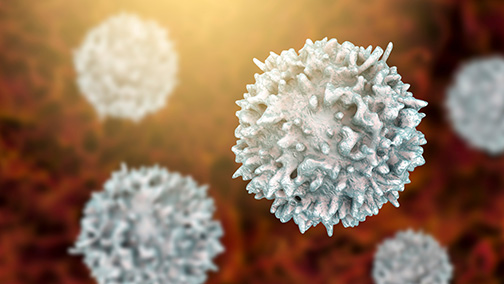Lymphocytes
Lymphocytes are a family of white blood cells found in the blood and lymphoid tissues that determines the specificity of immune responses to foreign organisms. There are three main types of lymphocytes: B cells, T cells, and natural killer cells. B cells produce antibodies to defend against invading pathogens and develop immune memory, while T cells coordinate humoral and cellular immune responses, and – similar to natural killer cells – initiate immune-mediated death of infected or degenerated cells. All lymphocytes originate from common lymphoid progenitor cells and differentiate into mature B cells and natural killer cells in the bone marrow, and mature T cells in the thymus.

Abnormal levels of lymphocytes play a role in the development of a number of diseases. A low lymphocyte count is termed lymphocytopenia and indicates low production, cell death, or a reduced ability to release cells from secondary lymphoid tissues.1 On the other hand, lymphocytosis is a lymphocyte count above the normal range, which could signify an infection or various forms of blood cancer.2
Find out more about each lymphocyte subtype, including formation, function, emerging research, the best investigative methods, and common cell markers:
References
1. Lymphocytopenia | National Heart, Lung and Blood Institute. NIH. Retrieved 25 January 2022, from https://www.nhlbi.nih.gov/health-topics/lymphocytopenia
2. Klein, U., & Dalla-Favera, R. (2010). New insights into the pathogenesis of chronic lymphocytic leukemia. Seminars in cancer biology. Vol. 20, No. 6, pp. 377-383. Academic Press.

